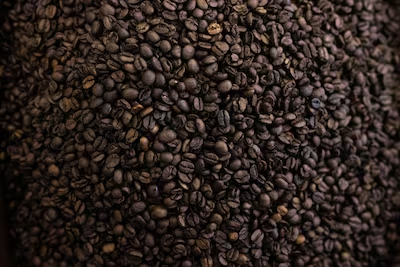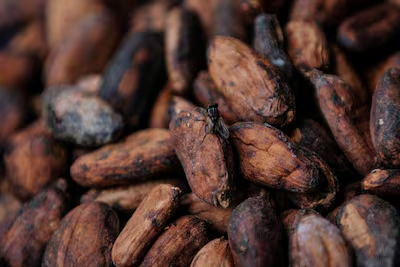If you believed that gold offered the most lucrative investment returns, it's time to perhaps revisit that thought. The reason: two commodities that consumers use frequently are stealing some lustre from the yellow metal when it comes to returns.
The real challenge, however, for retail investors is how to invest in them as effortlessly as you would with the shiny metal.
Gold has been on a bull run, achieving record high prices this year. On October 31, spot gold soared to an all-time high of $2,790.15. However, bullion prices fell following Donald Trump's victory in the US presidential elections, as the US dollar strengthened. A stronger dollar increases the cost of bullion for international buyers.
The performance of gold does appear dazzling, but it still pales in comparison to coffee and cocoa – the two unexpected contenders flying under the radar for many investors – whose growth in futures prices have been outshining gold.
Arabica coffee, one of the components of soft commodities traded globally, has surged around 90 per cent on the Intercontinental Exchange, also known as Ice, between December 31, 2020, to November 4, 2024, far beating gold’s 45.2 per cent gain on the Commodity Exchange (Comex), part of the New York Mercantile Exchange (Nymex), during the same period, Bloomberg data shows.
On November 4, prices of ‘C’ futures contract – the global benchmark for Arabica coffee – was trading at $243.20 a pound on the Ice, while gold futures on Comex was trading at $2,752.2 per ounce.
Arabica futures hit a 13-year high at $275.05 per pound on September 26, while November Robusta coffee futures hit an all-time high of $5,575 per metric tonne the same day.
"These were just the latest peaks after a period of three years of elevated coffee prices, which are the result of consecutive poor crops in the world’s two largest producers – Brazil and Vietnam,” Stefan Uhlenbrock, senior commodity analyst, S&P Global Commodity Insights, tells The National.
Like coffee beans, cocoa – the key ingredient used in making chocolates – too has rallied due to supply bottlenecks and poor weather affecting the crop.
The futures price of cocoa has left all soft commodities in the dust over the past two years. The cocoa contract on Ice – the world benchmark for the global cocoa market – was trading at $7,229 per metric tonne on November 4, up 177 per cent from December 31, 2020.
Cocoa prices reached historical highs of nearly $10,000 per metric tonne in March 2024, JP Morgan said in a report in April.
Behind the numbers
Commodities, such as gold, crude oil, wheat and aluminium are essential raw materials and unprocessed goods that can be consumed directly or processed and resold. They play a crucial role in various industries and are key components of the global economy.
Global commodity markets are going through an uncertain demand outlook, driven by stagnation in the Chinese economy, ambiguity surrounding the US Federal Reserve's stance on further interest rate cuts, and supply chain disruption due to geopolitical tensions such as the Israel-Gaza war and Russia-Ukraine war.
Almost all commodities are traded on the commodity exchanges in the form of derivatives, such as options and futures.

Derivatives provide investors with the opportunity to capitalise on the price movements of a commodity without the need to possess the actual physical commodity. It enables investors to speculate on the future value of a commodity, offering potential for profit through strategic trading strategies.
While commodities encompass a diverse array of assets, ranging from energy and agricultural products to precious and industrial metals, their prices are subject to fluctuations, influenced by factors such as production levels (supply) and business demand.
While most commodities are trading in negative territory over the past year, cocoa and coffee futures are among the exceptions, as data suggests.
So what has caused the futures prices of these two ubiquitous commodities to rise faster than that of gold?
“Cocoa's … and coffee's … YTD [year-to-date] rallies have baffled market participants," Vijay Valecha, chief investment officer, Century Financial, tells The National. "One of the major reasons for the continuing rally in [coffee] commodity prices is the dry weather in top producer Brazil … Similarly, another key producer, Vietnam, suffered a typhoon disaster damaging its key coffee acreage fields."
The recent price peaks of coffee futures, one of the world's most widely traded commodities, reflect this supply constraint. It also marks the culmination of a three-year period of elevated coffee prices, stemming from consecutive poor harvests in the world's top two coffee producers, Brazil (largest producer of Arabica coffee, the most common variety of coffee globally) and Vietnam (the largest Robusta coffee producer) due to adverse weather.
For cocoa beans, also referred to as cocoa, the situation is similar.
“The continuing cocoa rally can be attributed to poor weather affecting key harvesting areas in the largest cocoa growers, Ghana and Ivory Coast. It is further compounded by the fact that most critical acreage and production areas lack sound investment and surrounding infrastructure to withstand significant adverse weather impacts,” says Mr Valecha.
For cocoa prices, another factor behind the rally is the likely impact of new EU Deforestation Free Regulations from December this year.
“As per the proposed regulations, any beans imported to the EU (a region host to the top and highest-volume chocolate factories) must adhere to the new compliant rules. This is probably providing more tailwind and anchor support for the prices,” he explains.

In addition, structural headwinds to cocoa production, including insufficient investment in new trees and the widespread incidence of plant disease, have accumulated in West Africa over multiple seasons, Charles Hart, senior commodities analyst, BMI, a Fitch group company says.
However, while cocoa and coffee prices have outpaced gold in returns, the underlying drivers behind their market rally have been fundamentally opposite.
“Severe supply-side shortages have mired cocoa and coffee futures. Gold’s surge is principally demand-side driven – unprecedented central bank demand for gold, surging net speculative investor positioning, and expansion in bullion-backed ETFs [exchange-traded funds],” Ehsan Khoman, head of research – commodities, ESG and emerging markets research, MUFG Emea, tells The National.
When shine meets substance
The big question now: is investing in coffee and cocoa worth it for retail investors?
As tempting as it can be to splurge on coffee and cocoa futures, there are a few things to consider before investing in them, analysts caution.
First, it’s not as easy for a retail investor to participate in the market rally of coffee and cocoa prices, when compared with gold.
One can invest in cocoa and coffee commodities by buying individual stocks, ETFs, futures contracts or mutual funds that focus on them, but there is a caveat: while individual gold investors can purchase bars, coins, or jewellery, and stash them in a safety deposit box, this is not feasible in the case of perishable soft commodities, such as coffee and cocoa.
“It’s harder for retail investors to access the coffee and cocoa market rally compared to gold. Gold is very liquid and easy to invest in through channels like ETFs, physical gold, and futures, making it widely accessible to most investors,” says Mr Valecha.
In contrast, coffee and cocoa are more specialised markets with fewer direct options. “These commodities are primarily traded through futures, which are riskier and have an aggressive risk/return profile demanding more knowledge on the retail investor’s end,” he says.
Second, as Joshua Mahoney, chief market analyst, Scope Markets, explains, as with almost every soft commodity, coffee and cocoa futures rely less on market sentiment and economic activity for direction, “with price typically being driven by elements that might result in a bountiful or lacklustre harvest”.
Trading commodity futures can provide the opportunity to take advantage of any particular trend in the price of cocoa and coffee, “although it is advised to be well aware of any potential near-term volatility”, he cautions.
Investors seeking to jump on to the coffee or cocoa trend are likely to find it a less commonly served market, he adds.
“On one side, there are ETFs that seek to track the price of the commodity. However, those seeking single stocks can find it more difficult given the fact that companies selling the material may not be a producer.”
For example, someone seeking exposure to coffee may invest in Starbucks, however their profits may actually take a nosedive in the event of higher coffee prices if this rising cost is not passed on fully to the customer.
“Even if it is, they may experience lower demand as a result. Similarly, Hershey will likely become less profitable as cocoa prices rise, with many customers likely to substitute away from their product if the price rises by too much,” he explains.
Similarly, chocolate brands are grappling with the impact of higher cocoa costs, and many are passing on the burden to consumers in the form of price hikes, the JP Morgan report from April said.
Another way to gain exposure to the cocoa and coffee market is through CFDs (Contracts for Difference) – a derivative, similar to futures, but traded over the counter and not on exchange.
“CFDs allow traders to trade cocoa and coffee – long and short – and on leverage, so they do require the individual to have a higher risk tolerance and knowledge of markets,” Chris Weston, head of research, Pepperstone, tells The National.
“Given CFDs involve leverage – meaning you only put down a percentage of the full value as margin – they are really geared towards traders, who want to capture changes in price over a short-term time frame, but that really depends on the strategy the trader deploys.”



